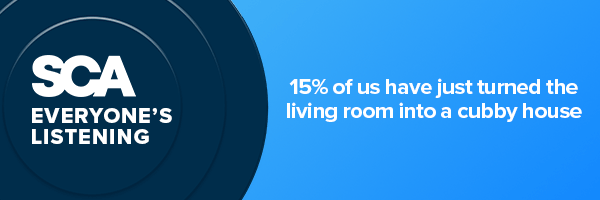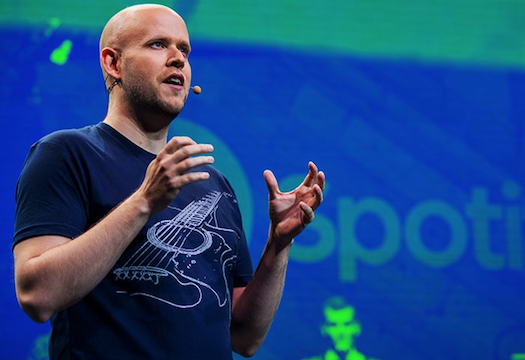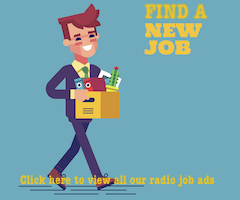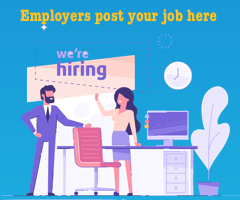Comment from Peter Saxon.
Last week in an interview with Music Ally, Spotify’s CEO Daniel Ek laid bare his company’s ambition:
“Both short and long term, we are always thinking about Spotify’s role within the larger ecosystem,” said Ek. “While most [external] focus is on competition between streaming services, we continue to be focused on the billions of users who are listening to linear radio.”
It’s enough to make an old radio hack like me have nightmares about an army of Killer Hertz coming to get me this winter.
I was truly worried until Ek went on to say, “The big audio trend of the next 20 years is a move from linear to on-demand” – in other words, from radio to streaming. At one point he reportedly said “everything linear dies.”
Really? Lets examine that outrageous claim for a minute or five.
Firstly, as I have consistently said over the better part of the past decade: Music streaming will not replace radio any time soon. What it has replaced is “owned music,” which, ever since the invention of the car 8-Track in the 1960’s, has co-existed with radio for its share of listening.
Granted, music streaming is the latest and most impressive of the challengers, so far, to be pitted against radio in the musical battlefield of mortal combat. With access to millions of songs in every imaginable genre, as well as some you couldn’t imagine if you tried, for less than the cost of one album per month, it beats the ipod it replaced, hands down.
But it has no personality and it lacks radio’s emotion and local context.
It is true, however, that in Australia, streaming has turned the television industry on its head since Netflix entered the market in 2015. Up to that point, Foxtel provided the most elegant means of time-shifting programs by way of its IQ box. Netflix offered something better: content on-demand.
If Mr Ek is trying to equate the Netflix experience with Spotify’s ambitions in audio, then he is barking up the wrong tree.
Nonetheless, let’s explore some of the similarities.
By now the FTA Television networks have all caught up to Netflix with their own content on-demand aps, as has Foxtel who’s gone one step further and integrated Netflix into their platform.
So, now that everyone, including newer players such as Stan, Amazon and Apple+, have their own on-demand platforms why does Netflix remain so dominant? As it invariably does, the answer lies in quality of content not platform. Or to paraphrase the legendary architect Frank Lloyd-Wright who first coined the phrase, “Form Follows Function,” in the case of electronic media, “Platform Follows Content.” And Netflix, to its great credit, has invested heavily in creating original and often ground-breaking content. As a result, not only have they disrupted television but the movie business and cinemas too.
Nowhere is the notion that platform follows content more true than on radio. For all the superior sound quality inherent in FM, AM stations 2GB and 3AW remain solid market leaders in Sydney and Melbourne. And while conventional wisdom has it that AM music stations are dead, the venerable 4KQ in Brisbane and and CRUISE1323 in Adelaide continue to perform well with their Classic Hits formats.
Is it true then when Spotify’s CEO says, “The big audio trend of the next 20 years is a move from linear to on-demand.” And, “Everything linear dies.”
For some media, maybe. But not for radio.
Radio has joined its television counterparts in offering on-demand or catch-up options for those listeners for whom it is more convenient than tuning in to the live, linear show. But it’s not original content like Netflix, it’s the same content, only later. And although the numbers for catch-up podcasts are showing strong growth it is mostly incremental to linear listening. That’s because people prefer to listen to live radio, if they can.
Having lost the edge in pre-recorded content such as drama, sitcoms, documentaries and such to the on-demand streamers, FTA TV and Foxtel have turned their attention to sport and reality shows – anything that involves a contest that produces a live result at the end. Sure, it’s useful to time shift a football match to watch later if you are unable to watch it live. But the recording has a very limited shelf life as you try to block out spoilers from reaching you in the meantime. And it’s just plain silly yelling, “Carn the Pies/Bunnies/Glory at the TV when the match finished two and a half hours ago.
A Breakfast show on radio is a Breakfast show because it’s what people listen to… more than that: it’s what people “do” at that time of day. They want to hear what’s happening now in news, traffic and weather, not what happened hours or days ago.

Before its ability to time shift through video recording or offer viewers programs on-demand, television was strictly by appointment, offering mostly prerecorded content – as was radio prior to the advent of television in the late 1950’s. The disruption caused by the introduction of television at the time, forced radio to re-invent itself. Ever since then, radio’s been at its best when it is live and local, and linear in a homogeneous format.
The Australian built ‘My Tuner’ ap lets me listen to more than 30,000 stations across the planet, if I want to. But I don’t want to. Why? Because an Ed Sheeran song sounds the same played on a station in Azerbaijan as it does in Bolivia. But apart from Ed’s latest hit, I want to hear a whole lot of things that have value to me, where I live, not where I don’t.
I want local weather, sport, news and local ads about the specials at Chemist Warehouse. I want presenters who watched the same TV shows last night as I did and can tell me all the goss about the judges on the Australian production of The Voice not the Armenian one. And as fascinating as politics in America is at the moment, I’m more interested in how it effects me and my family in Australia and what Scott Morrison has planned for containing COVID-19, not what Donald Trump’s doing about it.
Perhaps, someday, Spotify may find a way to seamlessly inject local artefacts – news, weather, traffic etc – into a globally distributed program that emulates radio. If they succeed, it would be a triumph of networking but I doubt it will have much to do with being available “on demand”.
I want my radio in real time. That’s why radio will survive against Spotify, not despite, but because it is linear.

Peter Saxon
Subscribe to the radioinfo daily flash briefing podcast on these platforms: Acast, Apple iTunes Podcasts, Podtail, Spotify, Google Podcasts, TuneIn, or wherever you get your podcasts.



